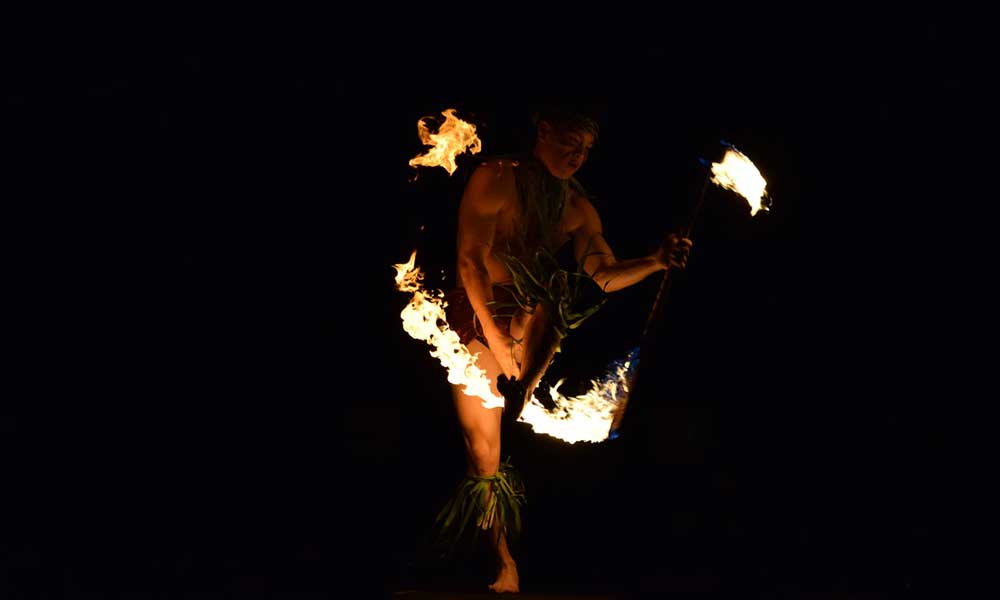A lū’au or simply “luau” is a Hawaiian party that features traditional food and music.
It’s lively, it’s entertaining, and it’s an important part of this state’s history.
Luaus are hosted by families and friends but they are also massive communal events in which paying guests are invited to enjoy food and entertainment.
What is a Hawaiian Luau?
Ancient Hawaiian culture prevented women from eating with men.
They all ate separately and women weren’t allowed to enjoy foods served during special occasions.
Everything changed in 1819 when King Kamehameha II ate with the island’s women and broke the taboo.
The Hawaiian luau was born, and it has been a celebrated tradition ever since.
The name “luau” essentially means “taro plant” and comes from the name of a dish often served at these parties.
In modern Hawaii, the term has been used synonymously with “party”, which is why you can be invited to a “birthday luau” or even a “graduation luau”.
What Foods are Served at a Hawaiian Luau?
At traditional Hawaiian luaus, the food was eaten by hand and served on the floor.
Mats were laid out, decorated with leaves, and everyone gathered around.
The main dish served at a Hawaiian luau is kalua pua’a or “kalua pig”, which is a slow-roasted pig.
You will find a variety of other dishes at Hawaiian luaus, and not all of these will be traditional Hawaiian dishes. Some of the most common luau dishes include:
- Poi: Made from taro roots. Poi used to be identified by how many fingers were used to eat it, such as “three-finger poi”.
- Laualu: Meat that has been wrapped in taro leaves and steamed. A very common luau food.
- Haupia: A sweet coconut pudding with a consistency of gelatin blocks.
- Fruits: A variety of fruits.
- Lomilomi Salmon: A tomato and salmon salad often served as a side dish.
- Kulolo: A Hawaiian dessert made from steamed or baked taro and coconut.
Food is obviously a major part of the luau experience.
It’s the centerpiece of the event and it’s usually served in abundance.
A proper Hawaiian feast will include a wealth of fresh and locally sourced ingredients, including lots of taro and meat.
Hawaiian Music and Dance
A traditional Hawaiian luau wouldn’t be complete without a little music and a lot of dancing.
Hula is one of the most common dances at a Hawaiian luau and it may be performed alongside chanting and/or music.
You will often hear traditional drums and maybe even witness a fire knife dance.
Modern Hawaiian luaus are also influenced by Hawaiian-themed music, and it’s not uncommon to hear pop music at these parties.
How Much Does a Hawaiian Luau Cost?
You can expect to pay up to $100 per person at a luau, although the exact price will depend on the event and the location.
There are greetings, drinks, food, ceremonies, and entertainment.
It’s good value for money, but it can be an expensive day out if you have a large family.
Which Hawaiian Island Has the Best Luau?
The Paradise Cove Luau in Oahu is one of the best in Hawaii.
It’s held at the Ko Olina Resort and includes a big ceremony and lots of great food.
At a Paradise Cove luau, you’ll be immersed in traditional cultures from across Polynesia, including Tahiti, Samoa, and New Zealand, as well as Hawaii.
Other great luaus on the Hawaiian islands include the Feast at Lele and Old Lahaina Luau in Maui, and the Smith Family Garden Luau in Kauai.
The award-winning Polynesian Cultural Center Ali’i Luau is also well worth a visit if you find yourself on Oahu.
It’s arguably the most authentic luau on the Hawaiian islands and promises great fun, food, and entertainment for the whole family.
Summary: The Hawaiian Luau
The Hawaiian luau has become a popular party theme in the United States and all over the world.
They are usually hosted in open outside areas, such as backyards or alongside pools.
There are plenty of flower necklaces (known as leis) and lots of traditional Hawaiian music and dance.
The authenticity of these luaus varies.
Some go to great lengths to ship food from the Hawaiian islands and to play only Hawaiian music.
Others are pretty ambiguous in their Hawaiian associations and are basically just grass skirts, hula dancing, and roasted meats.







